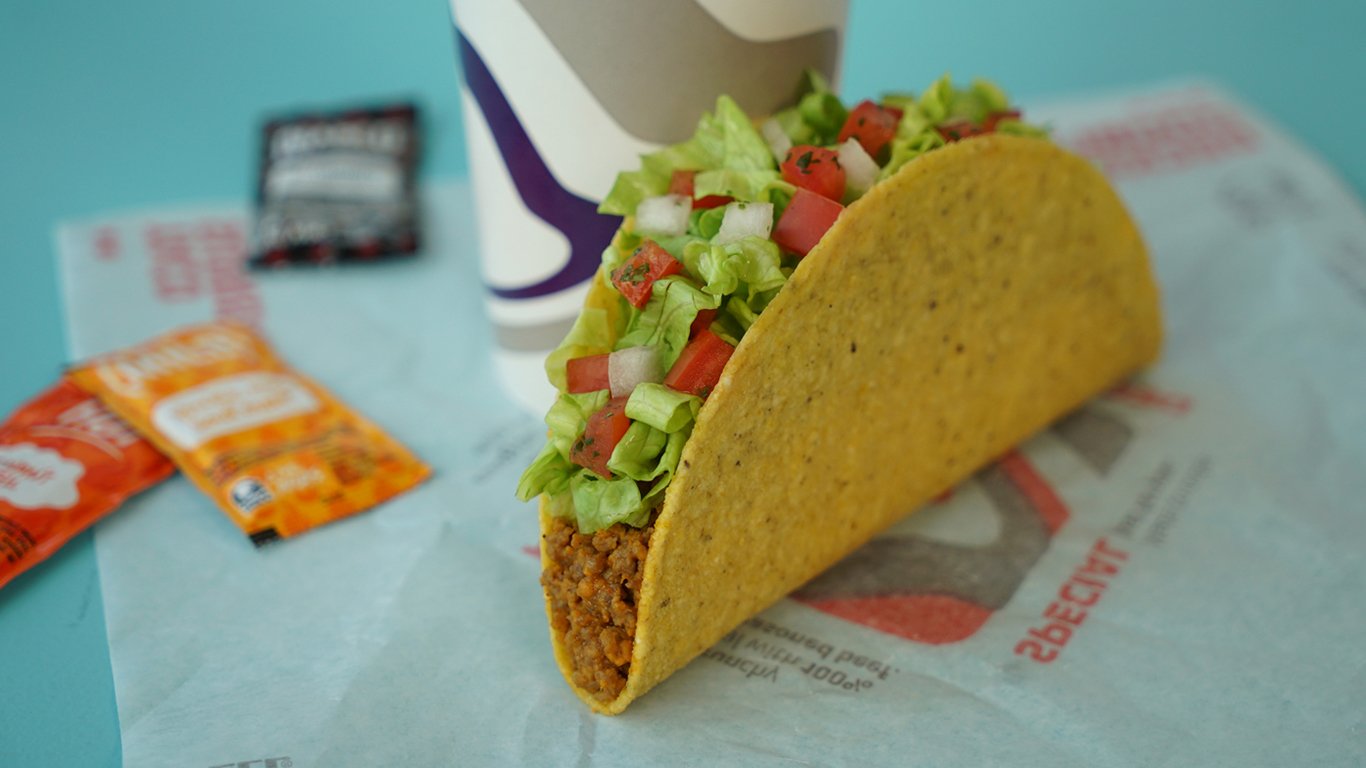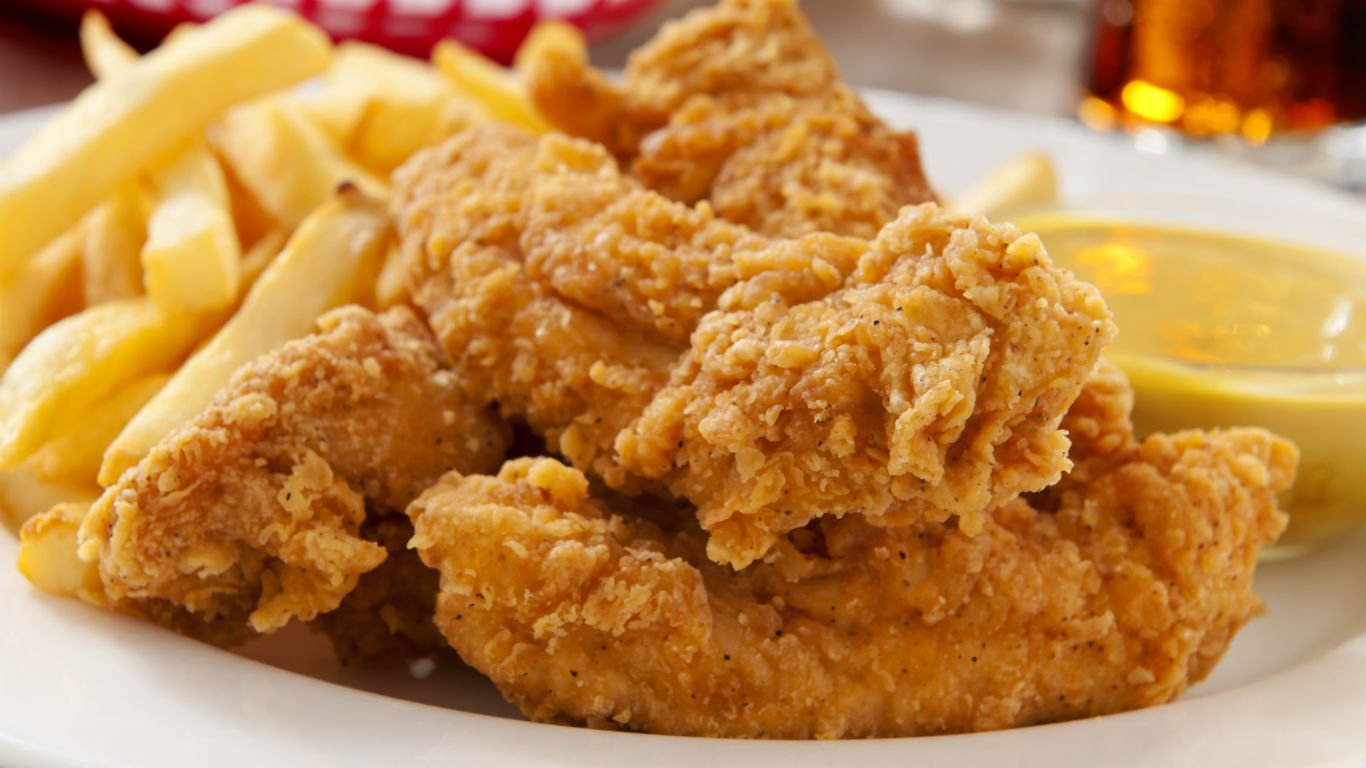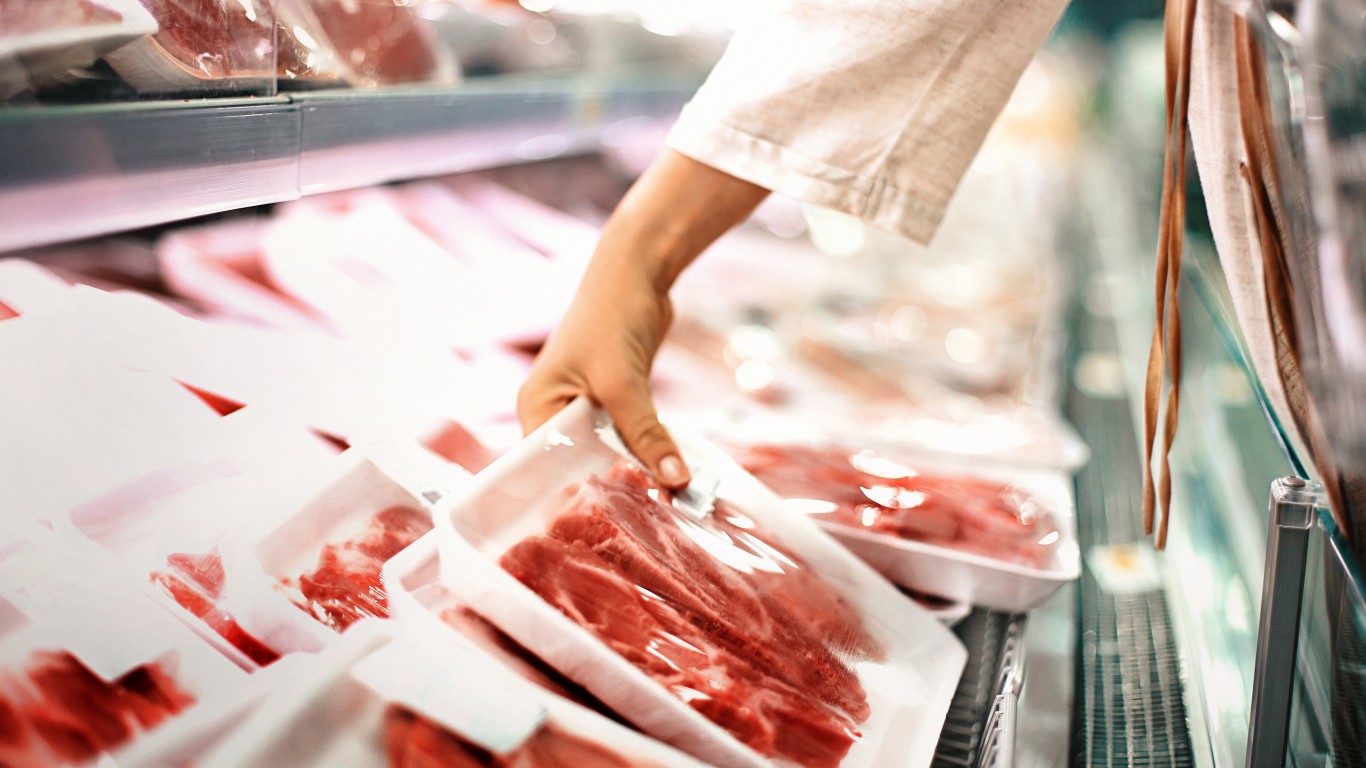

Since the onset of the novel coronavirus in the U.S., consumers have sometimes encountered bare shelves in some sections of their supermarkets. Especially when news of potential lockdowns first surfaced, shoppers rushed to stock up on — and in some cases hoard — staples like pasta, rice, beans, canned tuna, and bottled water, on occasion leaving whole aisles bare. Refrigerated meat cases — especially the chicken section — were often empty, too. (When doing your food shopping, it’s wise to consider these 20 foods to buy when you’re sheltering in place because of their long shelf lives.)
For a population that has long been used to an array of food choices that would be unimaginable in much of the world — stores typically stock 40,000 to 50,000 items per location — realizing that they might not be able to buy their favorite brands of this thing or that was a sobering experience. Did it mean that we’re running out of food?
It might seem that way sometimes, but according to the experts, while the U.S. could face minor, local food shortages (as Forbes put it), they will be temporary. It’s mostly a matter of logistics, of waiting for distribution networks to catch up to increased demand from retail customers (because there’s so much more home cooking going on).
There is one area, however, where consumers might see more noticeable and lasting shortfalls. Most of the beef, pork, and chicken produced in the U.S. comes from just three companies, who process their offerings in massive plants — a number of which are now temporarily closed, or at least operating with greatly reduced staff as a result of the coronavirus. (These are other U.S. industries being devastated by the coronavirus.)
Click here to see 13 things you need to know about meat shortages in the pandemic era.
As a result, even when supplies return to their former levels, we may well be buying our protein in slightly different forms than we’re used to — whole chickens instead of cut-up parts; large portions of less familiar cuts of beef, etc. Meanwhile, though, while food banks face unprecedented demand and almost 40 million Americans still have hunger issues, millions of animals raised for food are being culled because the capacity to process them has been greatly reduced.
24/7 Tempo has consulted numerous news publications and hunger and environmental advocacy sites in an attempt to bring clarity to the situation. As a result, here are 12 things you need to know about meat (and poultry and seafood) shortages — or lack of shortages — in these difficult times.

1. At least 16 meatpacking plants are currently closed
As of April 29, at least 19 U.S. meatpacking plants and five processed food plants have closed due to a shortage of workers. An estimated 5,300 plant workers across the nation have been confirmed to be ill with the novel coronavirus. Many thousands more have stopped going to work, either because they are required to quarantine at home in the face of possible exposure to the virus or simply because they refuse to labor under what many say were unsafe working conditions.
[in-text-ad]
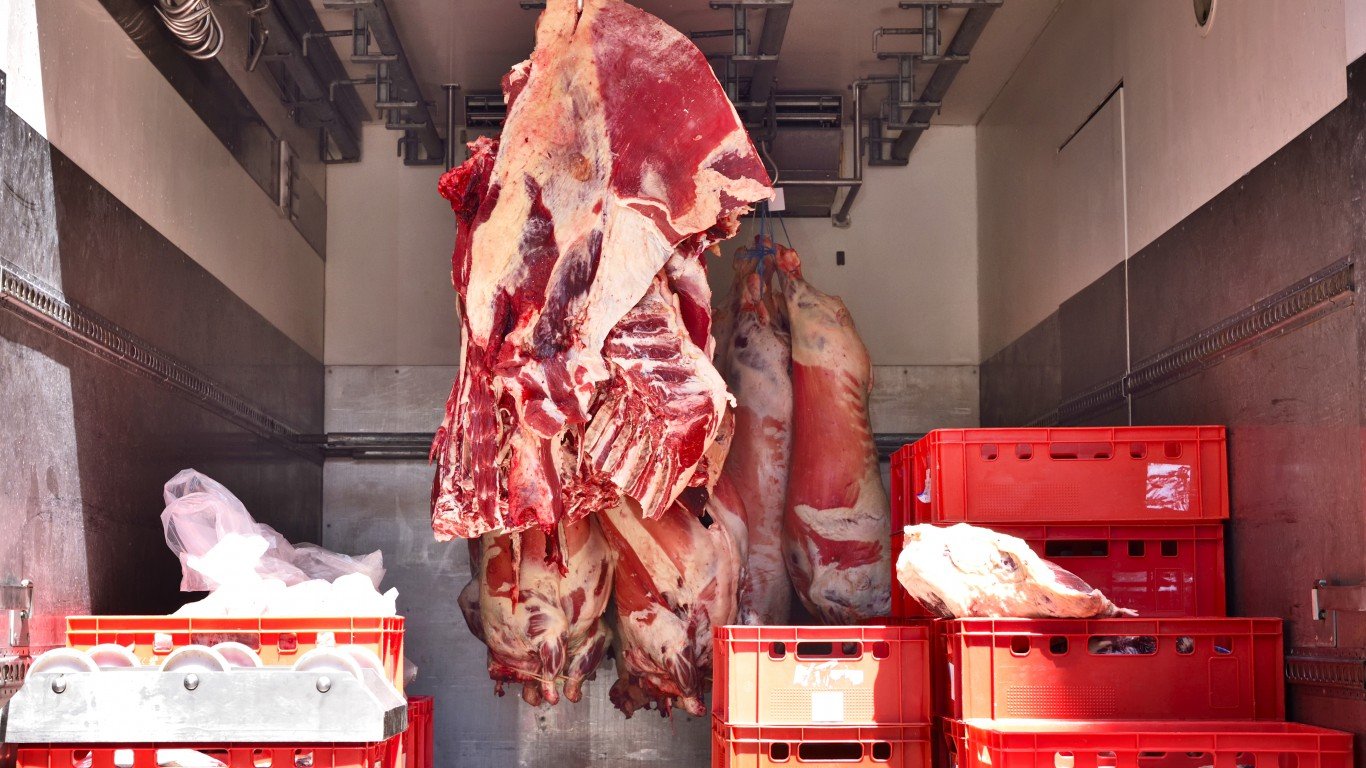
2. Millions of pounds of meat could disappear from the supply chain
John Tyson, chairman of the board of Tyson Foods, published an open letter to consumers on April 26 in the New York Times and other newspapers, warning that because of plant closures, farmers won’t be able to sell their livestock to processors. As a result, he wrote, “Millions of animals — chickens, pigs and cattle — will be depopulated.”

3. Yes, the slaughtering of surplus animals is called “depopulation”
Apparently, terms like “culling” and “euthanizing” aren’t quite consumer-friendly enough for the meat and poultry industry to use in describing the killing of animals that can’t be processed. The two main techniques for depopulation sanctioned by the United States Department of Agriculture (USDA) include suffocation with water-based foam or carbon dioxide gas combined with the shutting off of ventilation fans. The agency differentiates depopulation from euthanasia, the latter of which is considered more humane. “With depopulation,” says a USDA publication on the subject, “the welfare of the animals is given as much consideration as practical, but the situation is understood to be extenuating.”

4. Activists want to save at least some chickens from depopulation
A consumer coalition has launched a campaign and a petition attempting to spare the lives of at least a small number of the roughly two million chickens scheduled to be depopulated by poultry farms on the Delmarva Peninsula, a landmass shared by Delaware, Maryland, and Virginia. The coalition’s immediate goal is to save ten chickens and transfer them to sanctuaries. “We’re hoping that those 10 chickens can snowball into saving more,” Agustina Sosa, one of the group’s founders, told Delaware State News.
[in-text-ad-2]
5. The USDA might also be able to help save some animals
In addition to advising farmers on methods of depopulation (and disposal), the USDA is helping them find other solutions. The agency’s Animal and Plant Health Inspection Service has launched a National Incident Coordination Center to directly aid producers. Working with state veterinarians and other state officials, the Center is helping farmers find potential alternative markets for their animals to avoid the need to slaughter them.

6. Plant closures have resulted in a 25% decline in pork production
As of April 28, according to Bloomberg, processing plant shutdowns have wiped out a quarter of the nation’s pork-processing capability and 10% of that for beef. Critics of the protein industry cite the fact that about two-thirds of beef production and a large percentage of pork and chicken processing is concentrated in the hands of three companies — Tyson Foods, JBS SA, and Cargill Inc. (Smithfield Foods is another major pork producer). According to a statement from the White House, the shutdown of a single large meatpacking plant can result in the loss of ten million servings of beef in a single day.
[in-text-ad]
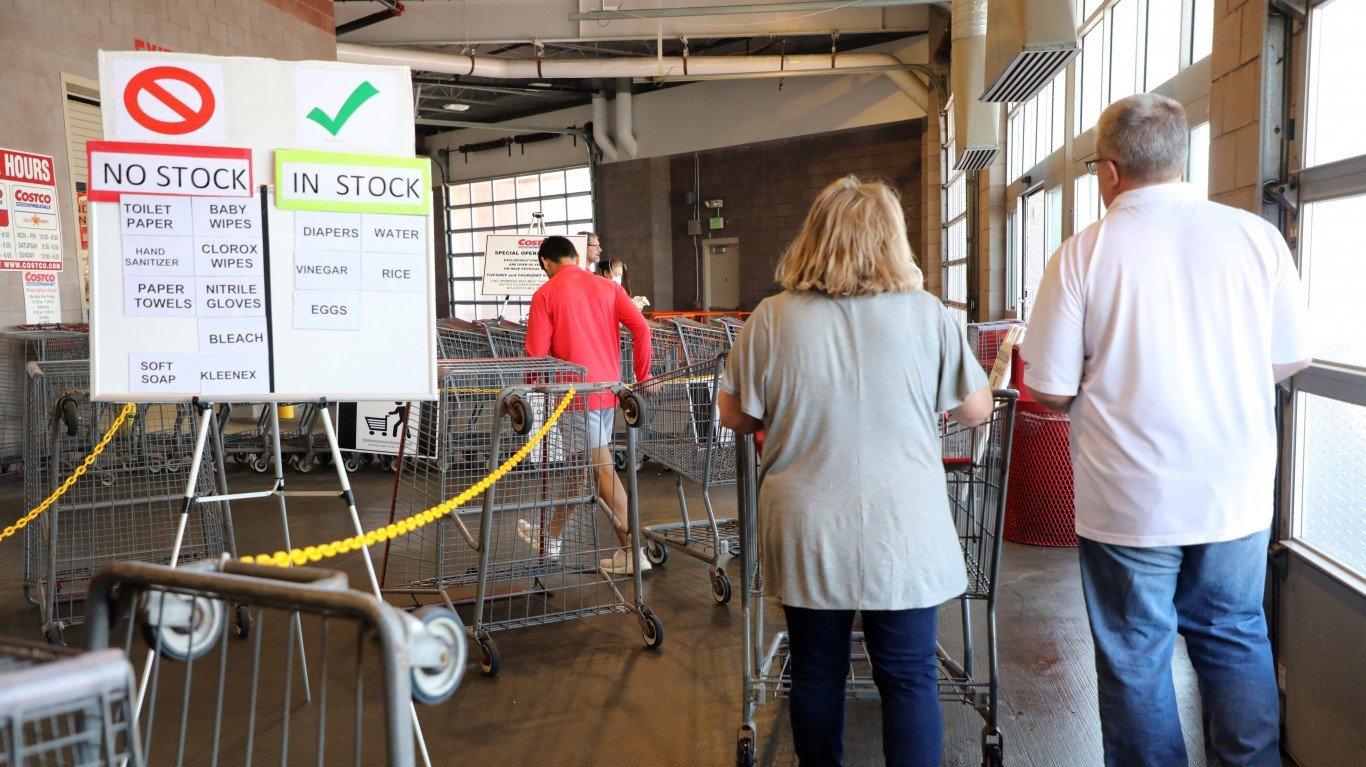
7. Some supermarkets are limiting meat purchases temporarily
Reflecting temporary shortages, the massive members-only discount chain Costco — which usually promotes buying in bulk — is now limiting purchases of beef, pork, and poultry products to three items per member. Kroger, which is by far America’s largest supermarket chain, is rationing meat purchases at some stores, and there are also restrictions at Walmart, Sam’s Club, and the regional Wegmans and Food Lion chains.

8. Despite production declines and ratioaning, there’s still plenty of meat
According to a blog published by the USDA, “Currently, the outlook for domestic production of agricultural commodities, including cereals, meat and dairy is very good. We have sufficient quantities to not only feed our country but maintain robust exports….” Any shortages consumers might encounter, says the agency, are likely due to a sudden increased retail demand for certain products, and supplies should normalize in time. The USDA also currently maintains an inventory of about 925 million pounds of beef, 662 million pounds of pork, and 491 million pounds of chicken, frozen in commercial and public storage.

9. President Trump has ordered meatpacking plants to remain open
Another factor that will likely help stave off any lasting meat shortages is the executive order signed April 28 by President Trump, compelling processing plants to remain open under the Defense Production Act. Closures, he said, “threaten the continued functioning of the national meat and poultry supply chain.” The United Food and Commercial Workers Union and other groups have protested the order, saying that it puts employees at risk and may pose safety issues for the food supply itself.
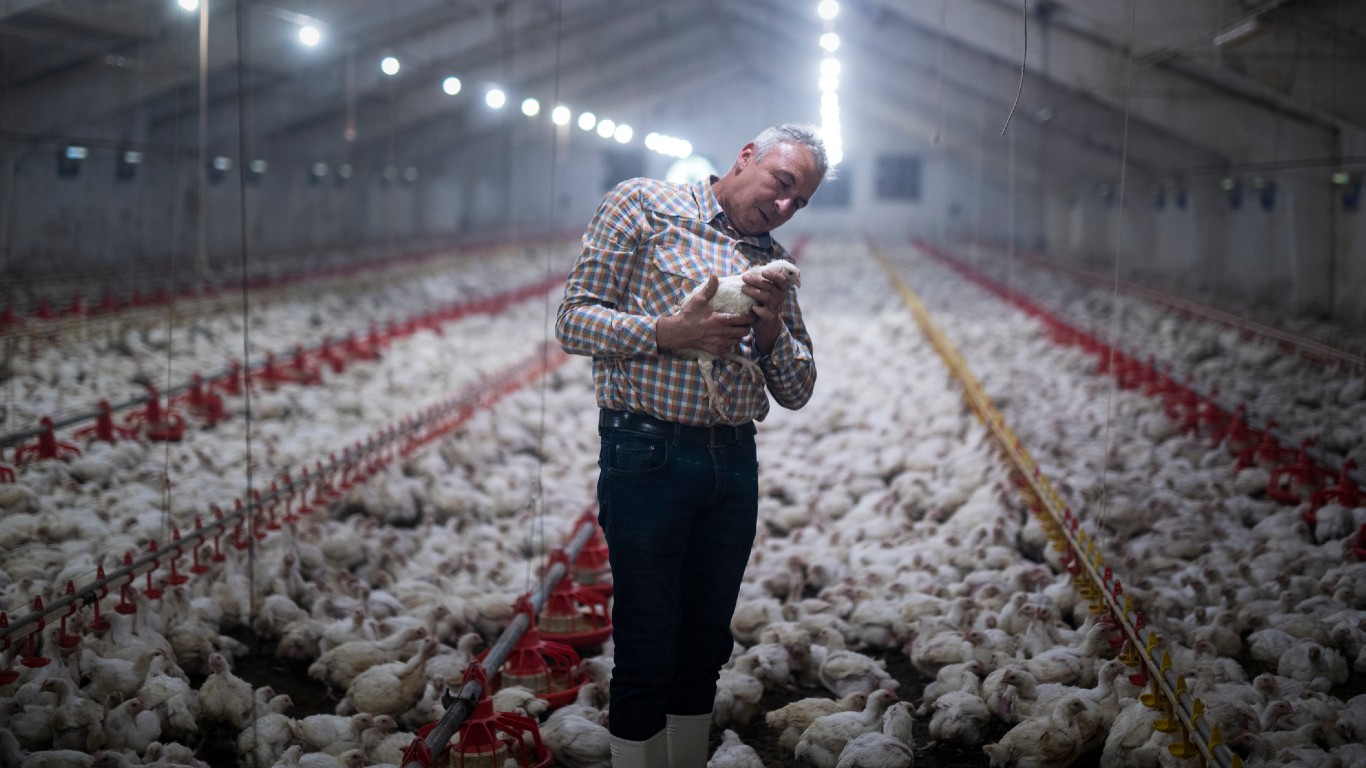
10. The way we raise meat might actually spawn pandemics
Some 90% of the world’s meat supply and about 99% of America’s is raised on factory farms. Gene selection in factory-farmed animals (to produce traits like larger chicken breasts), say experts, means that viruses can spread easily between animals without encountering genetic variations that might halt its progress. This potentially affects human beings, too; viral infections originating in both chickens and pigs have been responsible for such pandemics as avian and swine flu. Excessive use of antibiotics on animals is another issue, leading to antibiotic resistance on the part of consumers, an issue for pandemics that are bacterial rather than viral in nature.
[in-text-ad-2]
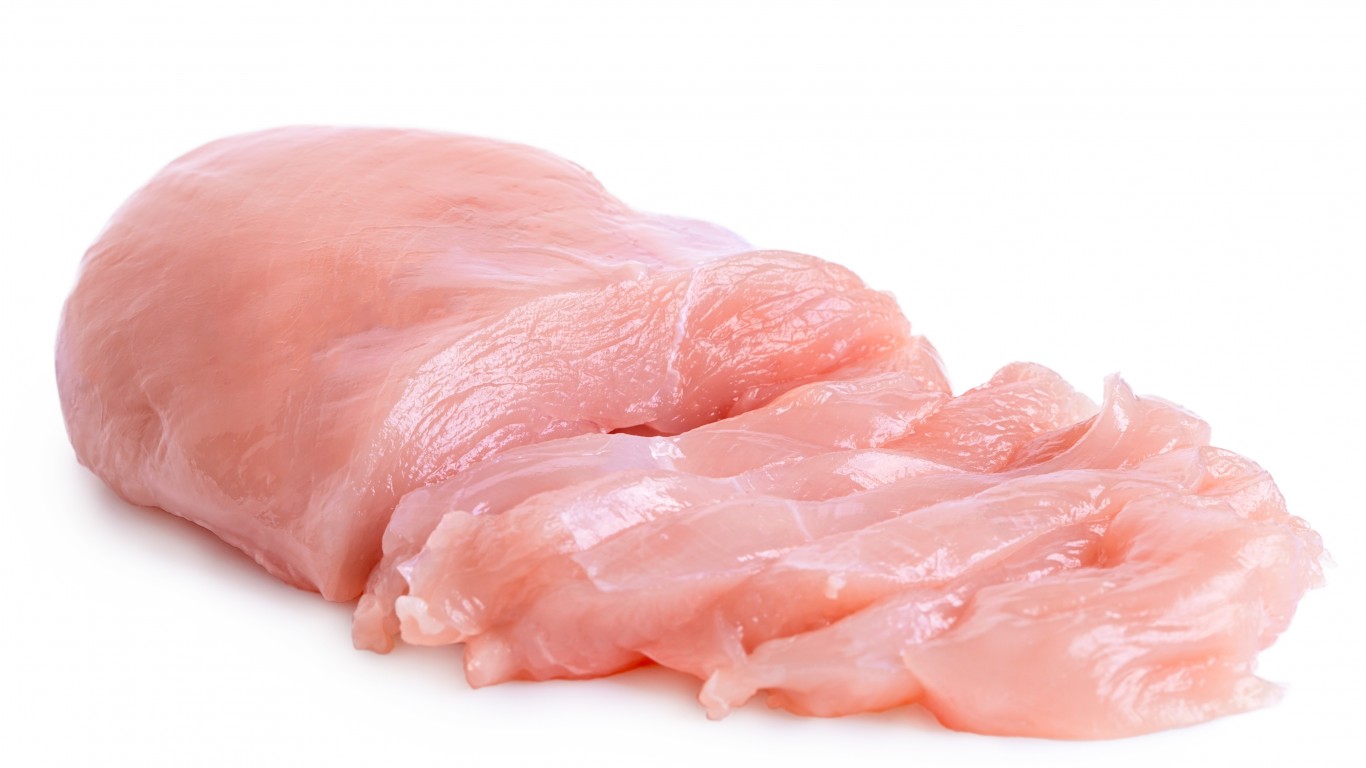
11. We might have to start cutting up and boning our own chicken
One shortage we might actually be seeing in the near future is one of chicken parts, as opposed to whole birds. According to NPR reporter Dan Charles, “the different chicken parts we’re used to…take more labor to cut up…[and]…when there’s less labor available in the processing plants, we may have to do a little more labor at home.” The same principle applies to boned-out chicken thighs, breasts, etc. Canadian producers are already shifting away from deboning chickens, since many suppliers are operating with less than half of their normal workforce.
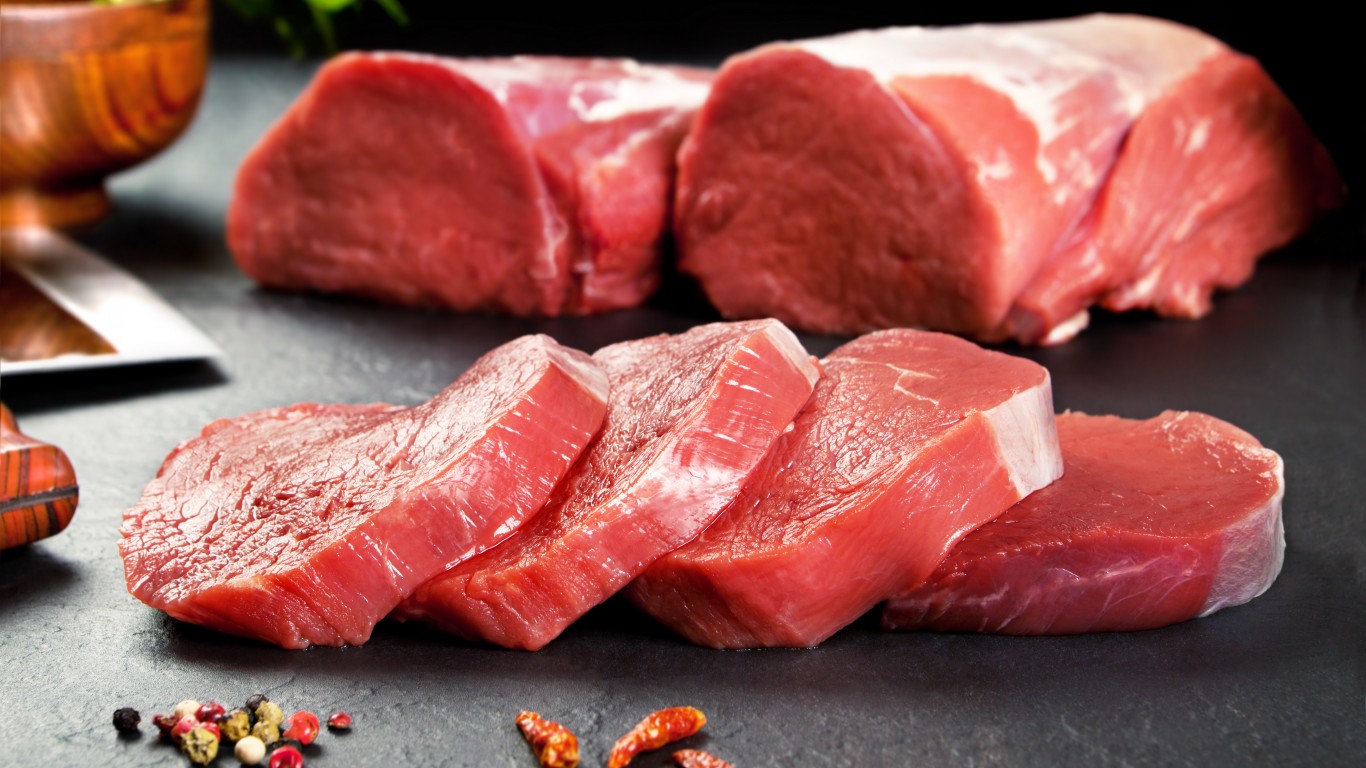
12. We might be buying larger portions of less familiar cuts of beef
Some beef suppliers are selling retail outlets larger pieces of meat that require less processing by short-staffed plants but more cutting by store butchers. To save labor on the store side, meat might be sold in larger pieces rather than individual steaks or roasts. According to Bloomberg, “Grocers are also trying to find a way to sell so-called ‘end cuts’ from the leg or trunk that consumers may be unfamiliar with.”
[in-text-ad]

13. Shortages of U.S.-caught seafood are a possibility, too
According to Salon, a crisis in the commercial American fishing industry is “playing out in coastal areas from Alaska to California and the Gulf of Mexico as the coronavirus pandemic disrupts domestic and international supply chains and seafood consumption plummets.” Before the coronavirus hit, two-thirds of the seafood caught in U.S. waters went to the hotel and restaurant industries. With those markets gone, fishermen are struggling to find new retail outlets, not just for best-selling items like salmon and cod, but for such lesser-known species as dogfish and skate wings, and efficient means of distribution are not yet up and running. As with meat and poultry, there’s still plenty of seafood out there; it’s the logistics that might cause problems.
Sponsored: Attention Savvy Investors: Speak to 3 Financial Experts – FREE
Ever wanted an extra set of eyes on an investment you’re considering? Now you can speak with up to 3 financial experts in your area for FREE. By simply
clicking here you can begin to match with financial professionals who can help guide you through the financial decisions you’re making. And the best part? The first conversation with them is free.
Click here to match with up to 3 financial pros who would be excited to help you make financial decisions.
Thank you for reading! Have some feedback for us?
Contact the 24/7 Wall St. editorial team.
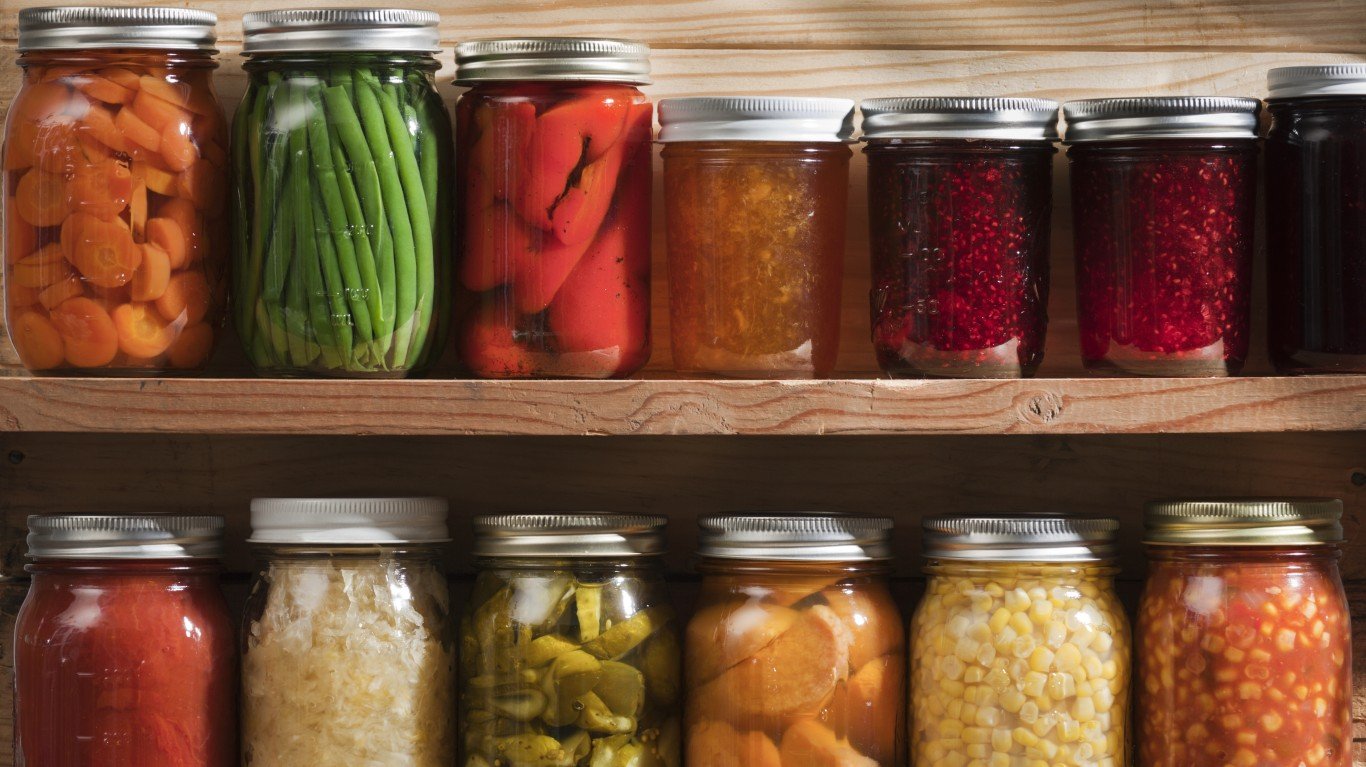 24/7 Wall St.
24/7 Wall St.
